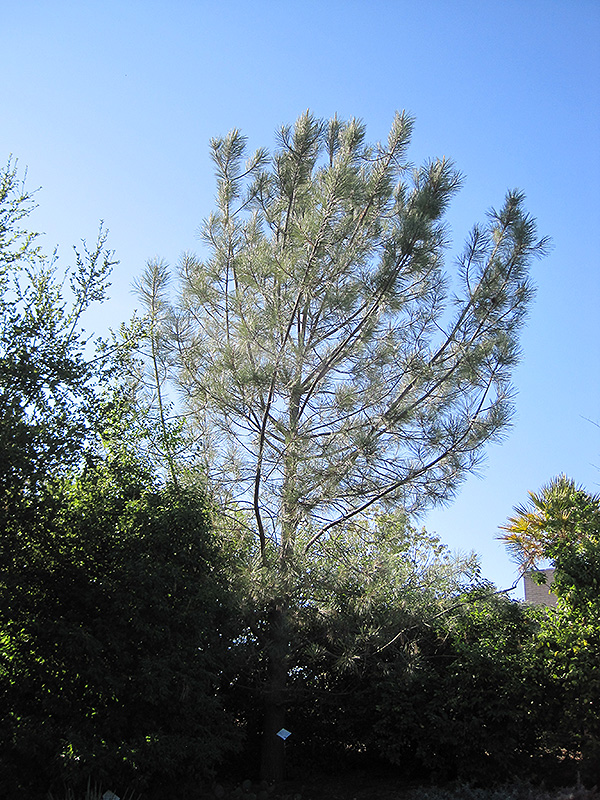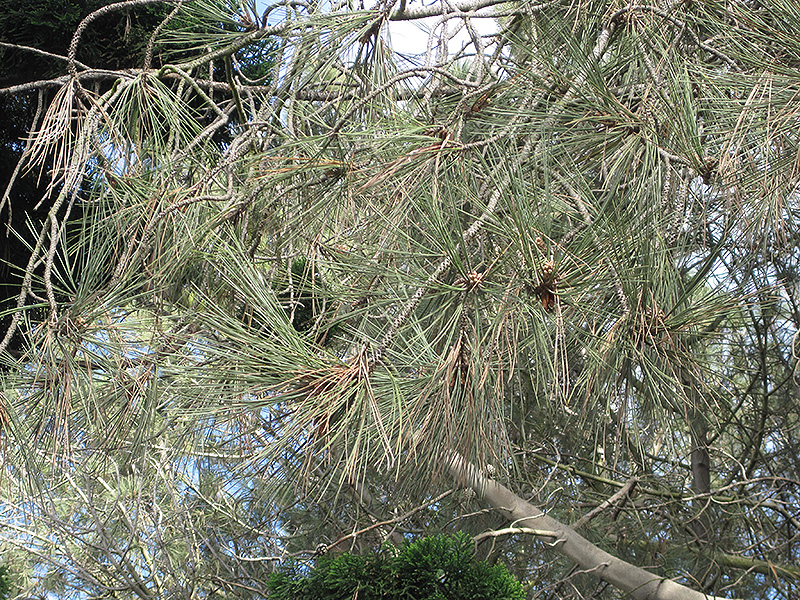Plant Finder
Height: 50 feet
Spread: 30 feet
Sunlight:
![]()
Hardiness Zone: 8a
Other Names: Del Mar Pine, Soledad Pine
Description:
A rare coastal native variety that grows in an upward irregular shape; long needles on gracefully extended branches lends an airy look; an interesting large accent for the landscape
Ornamental Features
Torrey Pine is primarily valued in the landscape for its ornamental upright and spreading habit of growth. It has rich green evergreen foliage. The large needles remain green throughout the winter. The brick red fruits are held in cones in mid summer.
Landscape Attributes
Torrey Pine is a multi-stemmed evergreen tree with an upright spreading habit of growth. Its relatively fine texture sets it apart from other landscape plants with less refined foliage.
This is a relatively low maintenance tree. When pruning is necessary, it is recommended to only trim back the new growth of the current season, other than to remove any dieback. It has no significant negative characteristics.
Torrey Pine is recommended for the following landscape applications;
- Accent
- Shade
- Mass Planting
- Hedges/Screening
Planting & Growing
Torrey Pine will grow to be about 50 feet tall at maturity, with a spread of 30 feet. It has a low canopy with a typical clearance of 3 feet from the ground, and should not be planted underneath power lines. It grows at a medium rate, and under ideal conditions can be expected to live to a ripe old age of 150 years or more; think of this as a heritage tree for future generations!
This tree should only be grown in full sunlight. It prefers dry to average moisture levels with very well-drained soil, and will often die in standing water. It is considered to be drought-tolerant, and thus makes an ideal choice for xeriscaping or the moisture-conserving landscape. It is not particular as to soil type or pH, and is able to handle environmental salt. It is somewhat tolerant of urban pollution. This species is native to parts of North America.





